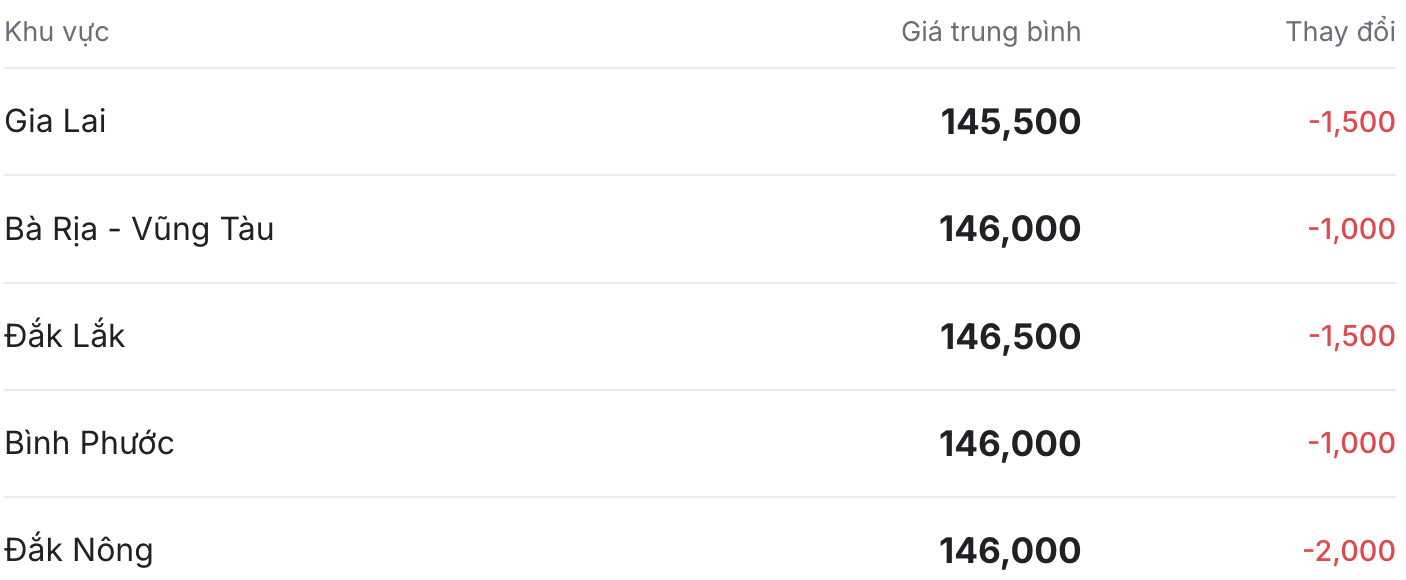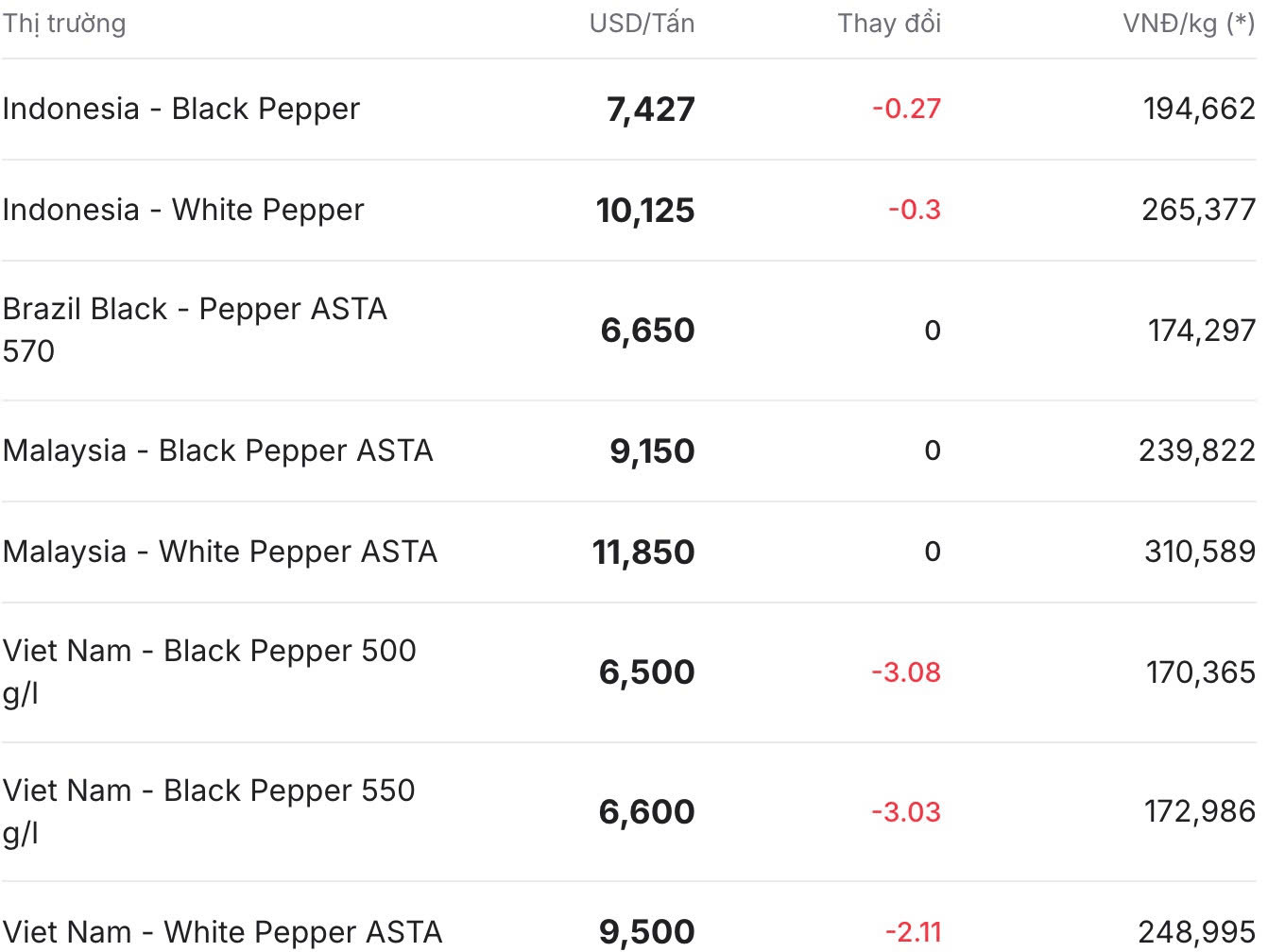Domestic pepper prices: Suddenly drop sharply
As of 11:30 today (May 29), the domestic pepper market suddenly dropped in price, an average decrease of VND 1,400/kg. Currently, pepper purchasing prices range from 145,500 - 146,500 VND/kg.
Pepper prices in Ba Ria - Vung Tau, Binh Phuoc both decreased by VND 1,000/kg, currently hovering at VND 146,000/kg.
Meanwhile, Dak Nong and Dak Lak are the two areas that regularly buy pepper at high prices, also decreasing by VND 1,500/kg and VND 2,000/kg respectively, bringing the price to VND 146,000/kg and VND 146,500/kg.
Compared to yesterday's closing price, Gia Lai is the province with the lowest purchasing price, down 1,500 VND/kg.

World pepper prices: All plummet
In the world market, pepper prices fluctuated strongly in most regions. After a series of price increases, the Indonesian market - one of the most vibrant exchanges - suddenly decreased in price. Currently, these two items have decreased by 0.27% and 0.3%, listed at 7,427 USD/ton (equivalent to 194,662 VND/kg); white pepper is listed at 10,125 USD/ton (about 265,377 VND/kg).
In Vietnam, the export price of black pepper of 500 g/l and 550 g/l decreased more than 3%, currently at 6,500 - 6,600 USD/ton (equivalent to 170,365 - 172,986 VND/kg). ASTA white pepper prices also decreased, at 9,500 USD/ton (about 248,995 VND/kg).
The Malaysia and Brazil exchanges alone are stable. Malaysia's white rice continues to hold the highest price globally at 11,850 USD/ton (equivalent to 310,589 VND/kg).

Assessment and forecast
According to a recent report by Ptexim, pepper prices fell 4.6% last week. The main reason comes from the instability in US tax policy, causing the confidence of importers to decline.
Inventory at overseas warehouses in the US and EU is decreasing quite rapidly. In the context of unclear tax rates against the US, many importers have been cautious, temporarily stopping signing new orders and waiting for the results of tariff negotiations in the next few weeks.
If the tax rates are negotiated and applied harmoniously between countries, import demand in many countries is likely to increase sharply as companies need to supplement the amount of reserves that have only been imported at a moderate level in the past 2-3 months.









